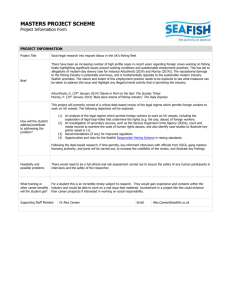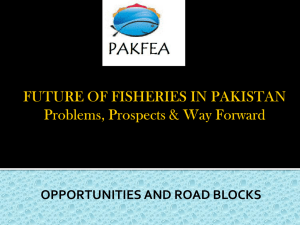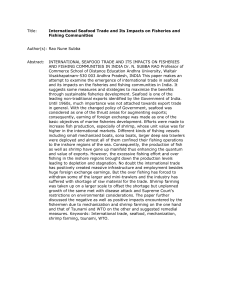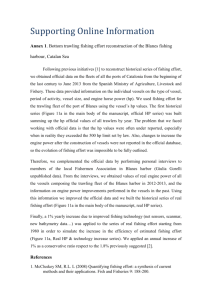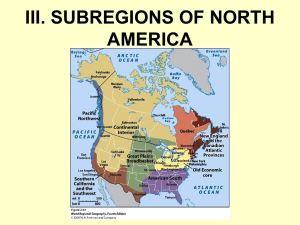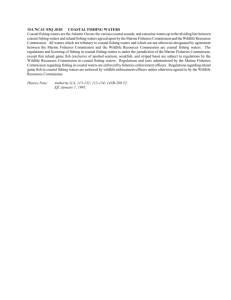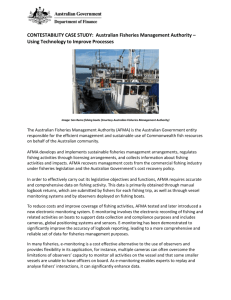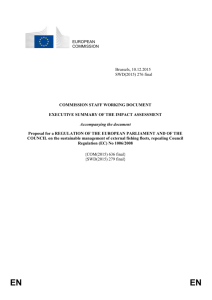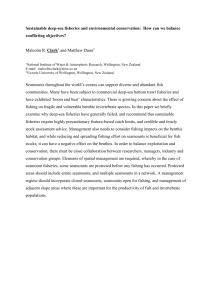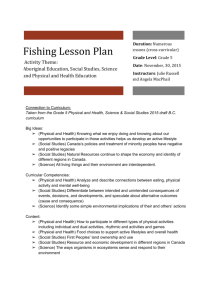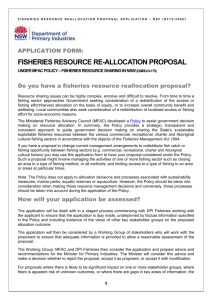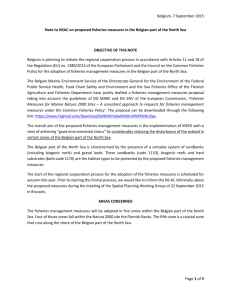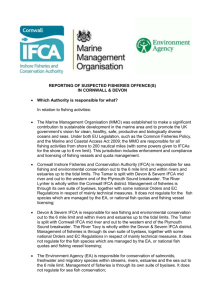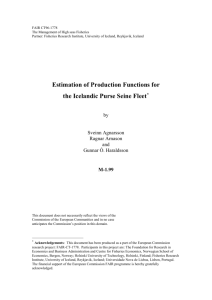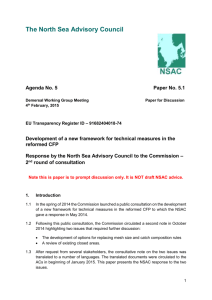Abstract 8 - Economic advice in fisheries management
advertisement
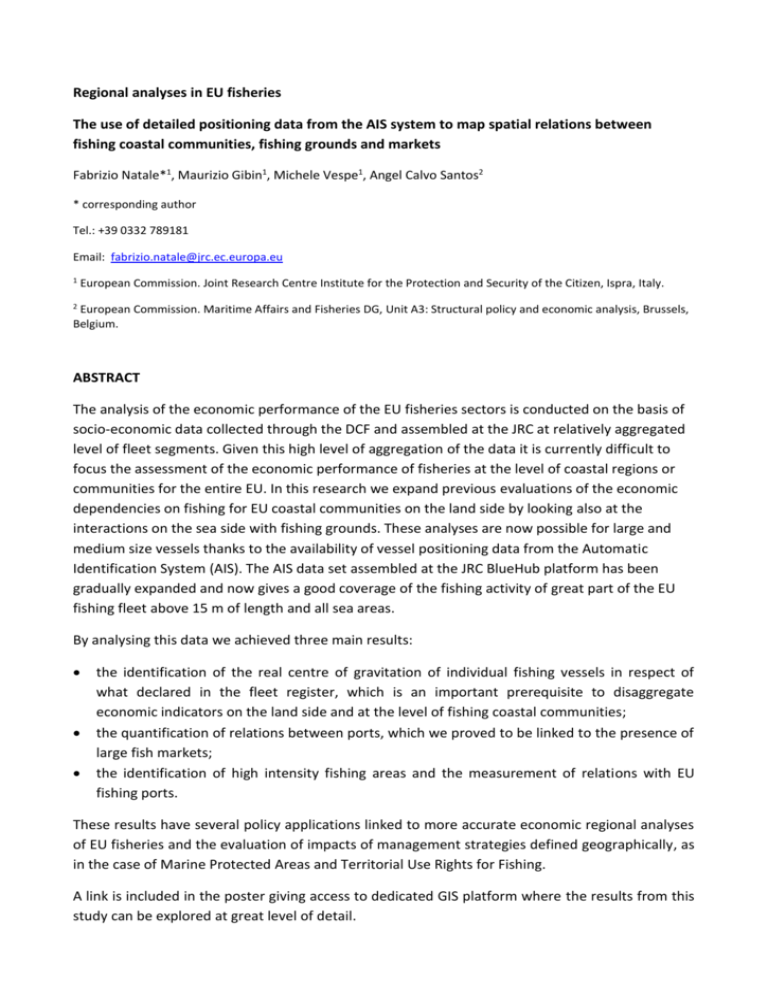
Regional analyses in EU fisheries The use of detailed positioning data from the AIS system to map spatial relations between fishing coastal communities, fishing grounds and markets Fabrizio Natale*1, Maurizio Gibin1, Michele Vespe1, Angel Calvo Santos2 * corresponding author Tel.: +39 0332 789181 Email: fabrizio.natale@jrc.ec.europa.eu 1 European Commission. Joint Research Centre Institute for the Protection and Security of the Citizen, Ispra, Italy. 2 European Commission. Maritime Affairs and Fisheries DG, Unit A3: Structural policy and economic analysis, Brussels, Belgium. ABSTRACT The analysis of the economic performance of the EU fisheries sectors is conducted on the basis of socio-economic data collected through the DCF and assembled at the JRC at relatively aggregated level of fleet segments. Given this high level of aggregation of the data it is currently difficult to focus the assessment of the economic performance of fisheries at the level of coastal regions or communities for the entire EU. In this research we expand previous evaluations of the economic dependencies on fishing for EU coastal communities on the land side by looking also at the interactions on the sea side with fishing grounds. These analyses are now possible for large and medium size vessels thanks to the availability of vessel positioning data from the Automatic Identification System (AIS). The AIS data set assembled at the JRC BlueHub platform has been gradually expanded and now gives a good coverage of the fishing activity of great part of the EU fishing fleet above 15 m of length and all sea areas. By analysing this data we achieved three main results: the identification of the real centre of gravitation of individual fishing vessels in respect of what declared in the fleet register, which is an important prerequisite to disaggregate economic indicators on the land side and at the level of fishing coastal communities; the quantification of relations between ports, which we proved to be linked to the presence of large fish markets; the identification of high intensity fishing areas and the measurement of relations with EU fishing ports. These results have several policy applications linked to more accurate economic regional analyses of EU fisheries and the evaluation of impacts of management strategies defined geographically, as in the case of Marine Protected Areas and Territorial Use Rights for Fishing. A link is included in the poster giving access to dedicated GIS platform where the results from this study can be explored at great level of detail.



